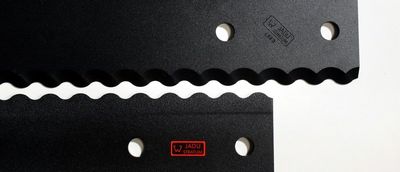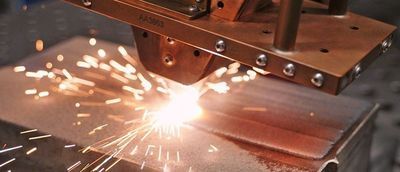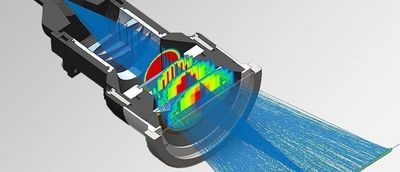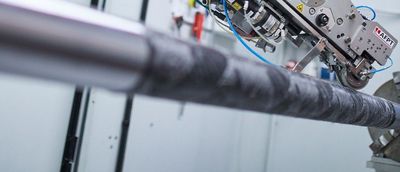High speed cladding as alternative for hard chromium plating
Quiz question: Which event of importance takes place in Europe on September 21, 2017? – No, it is not the election for the 19th German Bundestag, which takes place three days later with outcomes that are far from certain. But what will happen on September 21st is certain: On that day, the era of hard chromium plating will end. Industrial companies that do not have an exemption from the European Chemicals Agency (ECHA) will not be permitted then to further use the popular coating method. The reason: chromium (VI)-oxid, which is needed for chromium baths, has been classified to be “of great concern”, because it is explicitly hazardous to health and the environment. Details can be read in the annex XIV of the EU Chemicals Regulation REACH (Registration, Evaluation, Authorization and Restriction of Chemicals).
By prohibiting hard chromium plating, a method with a wide field of use has been ruled out. Rollers, screws, piston rods and axles: these and other components have, since a long time now, been coated with the help of this galvanic process and thus protected from abrasion and corrosion. The created coatings are rated as excellent and are clearly superior to almost all other protective layers. So, has the regulation diligence of the EU authorities thrown the child out with the bath water? No it hasn’t. This is because the aforementioned health risks based on years of research are serious: carcinogenic, mutagenic and toxic – these qualities of chromium (VI) would probably have been sufficient for several prohibitions. Thus, the new regulation is well justified.
Users of hard chromium plating, however, have difficulties finding a suitable substitute for this method. For some time now, thermal spraying for example, which today is often mentioned as an alternative, was earlier found to be unpersuasive. Because, unfortunately, you sometimes have to admit: ‘A thermal spray coating does not always succeed nor stick’. Coatings that were realized with this method are often porous and cracked. Furthermore, they do badly stick to the workpiece, as their adherence is weaker than that of galvanic layers. Therefore, it is not surprising that several manufacturers hope to avail themselves of special permissions to continue using the hard chromium plating. However, this is akin to playing with fire because in the medium term and without a shadow of a doubt, the EU wants to push chromium (VI) off the track.
Whoever is not succumbed to the allure of the forbidden and is open to alternatives should therefore think about using laser cladding. The coating material is blown in power form onto the workpiece where it is melted by laser so that it connects metallurgically with the basic material. This method creates more stable protective layers than hard chromium plating, but experts warn: up to now, in order to melt the powder, the laser had to stay on the workpiece for such a long time that a maximal 50 cm2 per minute could be coated and only layers of more than 0.5 mm thickness could be realized. So, this technology was not good enough for all coatings, not to mention that its use was not really economical.
Ever since the Fraunhofer Institute for Laser Technology (ILT) has finally managed to further develop the powder-based laser cladding towards extreme high-speed laser cladding (EHLA), the cards are being entirely reshuffled. With a different adjustment of laser beam and powder nozzle, the coating material is already melted before it touches the workpiece. This reduces the retention time of the laser and therefore increases the process speed; and it saves energy, too. The results are something to be proud of: in test runs that were examined using an Inconel 625 nickel-chromium alloy and a Laserline LDF-4000-8 diode laser with beam converter, ILT coated an area of 500 cm2 per minute with a layer thickness of only about 20 µm. This is, believe it or not, at a tenfold process speed; at the same time, the layer’s thickness was more than halved. Even extreme thin layers of about 10 µm have been made possible — and with ease.
Conclusion: with such parameters, nobody mourns for the hard chromium plating anymore. And who knows – maybe in the EU they will be grateful that they have banned this method and in so doing opened doors for something new. There is thus satisfaction within Europe. And all thanks to laser cladding, this would be a whole new improvement.




